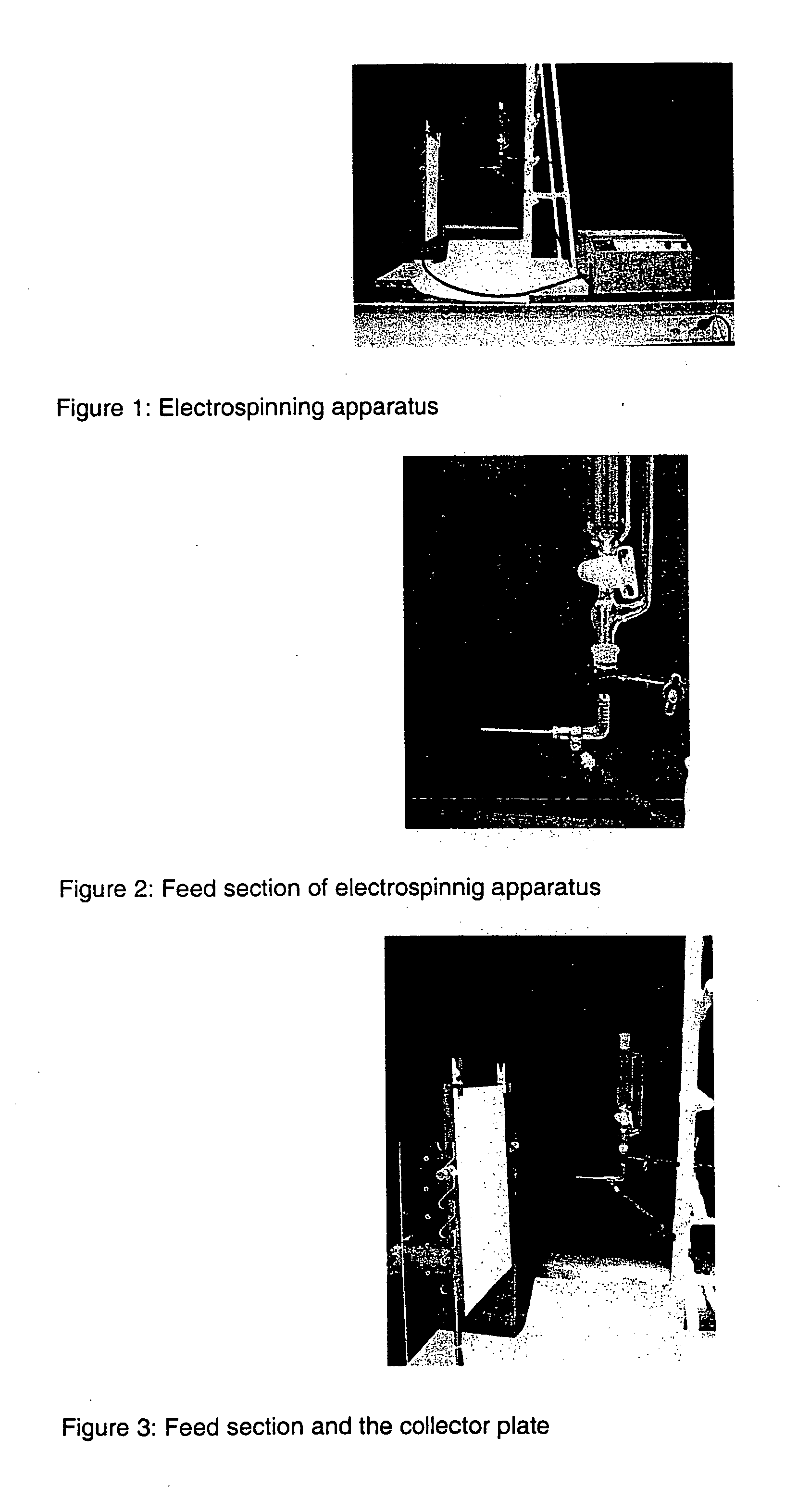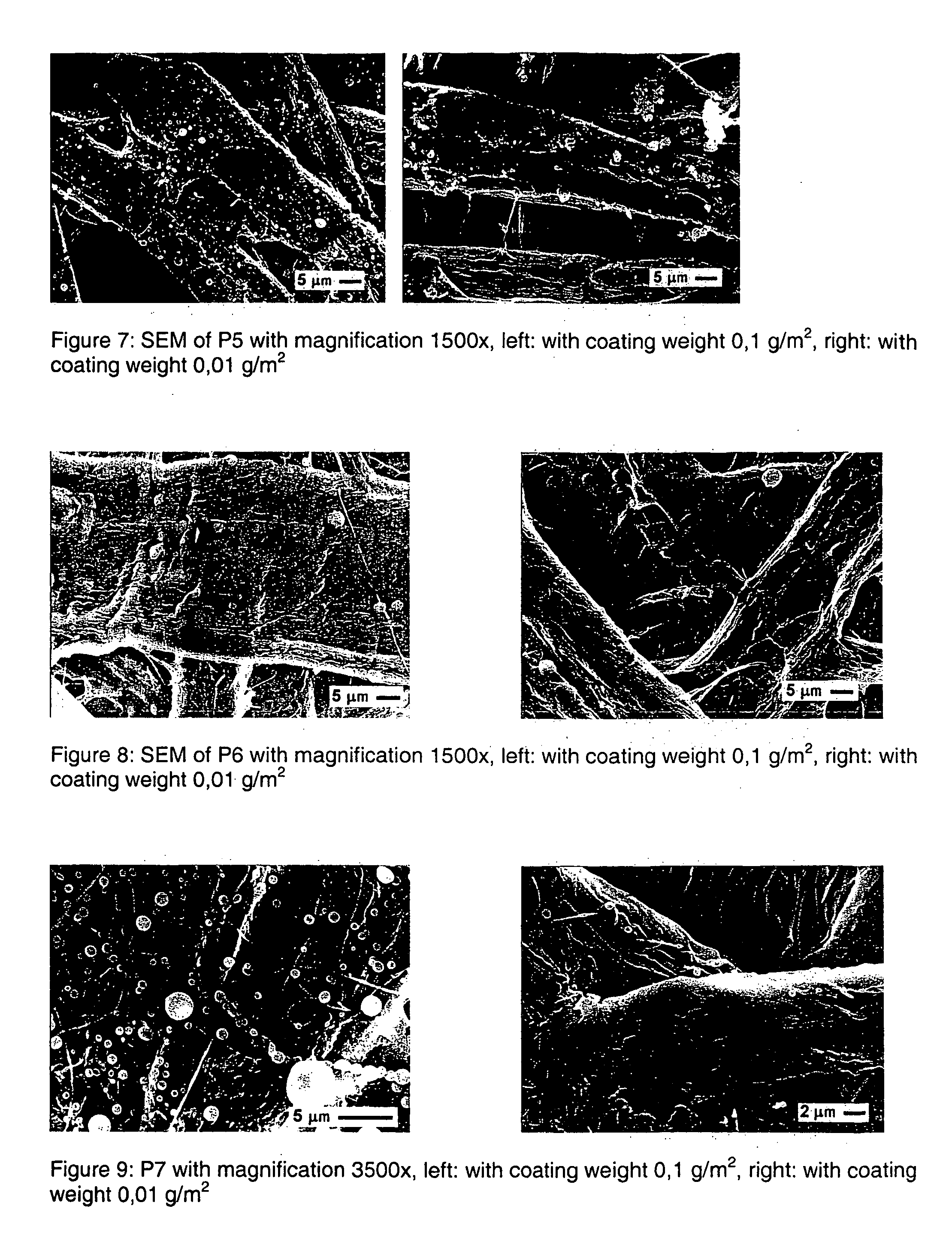Priming and coating process
a technology of coating process and primer, which is applied in the field of priming and coating process, can solve the problems of less available sites, difficult to achieve the correct coating weight suitable for the specific primer to be used, so as to minimise interference, improve the effect of productivity and high molecular weigh
- Summary
- Abstract
- Description
- Claims
- Application Information
AI Technical Summary
Benefits of technology
Problems solved by technology
Method used
Image
Examples
Embodiment Construction
[0047] In the following, the invention is exemplified by a few examples, the procedures of which are described more closely below.
[0048] In this experimental work, priming was made with an electrospinning apparatus as illustrated in FIG. 1. The apparatus includes a fume chamber, the walls of which, except the front side wall, are constructed of metal plate, to minimise the external and internal electrical interference. The inner wall surfaces are covered with glass fiber composite. The used power supply unit is a high-voltage supply of type BP 50 Simco. The power supply can produce both positive and negative 0-50 kV voltage.
[0049] The apparatus also includes a feed section having a spinneret and a needle. The needle is attached to the spinneret which is made of glass with luer (mikä on luer?) junction and the power supply is connected to the metallic junction of the needle. The feed section is illustrated in FIG. 2.
[0050] As a counter-electrode to the feed section a square copper...
PUM
| Property | Measurement | Unit |
|---|---|---|
| diameter | aaaaa | aaaaa |
| diameter | aaaaa | aaaaa |
| viscosity | aaaaa | aaaaa |
Abstract
Description
Claims
Application Information
 Login to View More
Login to View More - R&D
- Intellectual Property
- Life Sciences
- Materials
- Tech Scout
- Unparalleled Data Quality
- Higher Quality Content
- 60% Fewer Hallucinations
Browse by: Latest US Patents, China's latest patents, Technical Efficacy Thesaurus, Application Domain, Technology Topic, Popular Technical Reports.
© 2025 PatSnap. All rights reserved.Legal|Privacy policy|Modern Slavery Act Transparency Statement|Sitemap|About US| Contact US: help@patsnap.com



